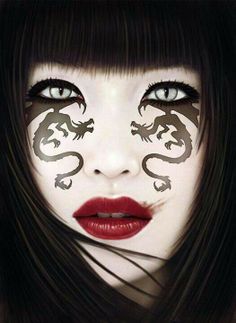Prose-- Why Do I Like Haiku?
A chapter in the book One Thousand Cranes
Gypsy's Haiku

Fanstorian Tom Horonzy, asked me why do I like writing Japanese Poetry so much.
I am a painter and I enjoy all kinds of visual art. I like everything about Haiku, the writing, the satori’s zen enlightenment, the beautiful simplicity, and the artistic presentation.
Haiku goes back to the 17th century but other Japanese poetic forms go back as far as the 8th century. After all that time, haiku is still relatable today. Master Matsuo was the first haiku poet in the 17th century. He is regarded as the best haiku master in history.
Poets in the West began a new poetic form called imagism that is similar to haiku. Imagism is a type of poetry that describes images with simple language and great focus. It came out of the Modernist poetic movement in the early 1900s.
When I found haiku in 2015, I felt like I arrived home. I love everything about it and since then I have written haiku daily, at least 2 haiku a day. I read a lot and I have found my own style. I found a niche in fanstory and I've learned a lot from the reviews I receive daily.
Many poets in fanstory were not aware of the haiku possibilities. Most poets adhere to the narrow-minded 5/7/5 form. I love to teach this ancient art. I taught fanstory haiku classes for a while but now I don’t have the time. However, I have two clubs: haiku club and Japanese poetry club. I teach one-on-one for free.
Besides the visual aspect of haiku, there is a philosophical component – Zen enlightenment – called satori. Zen Buddhism has shaped Japanese haiku for centuries. Many haiku poets were Zen Buddhists, like haiku masters Basho and Issa. Haiku is based on Buddhist ideas of emptiness and change. The emphasis on seasons in haiku means a sense of change in the natural world, parallel with the human world.
A well written classic haiku has many rules but, in my opinion, these are the basics:
– It must be brief (17 syllables OR LESS)
– It must have an insightful satori line, usually the last line but it can be the first one too.
– It must create a mental picture with words
– The poet is an observer, avoid using yourself as the subject of the phrase (I see, I walk, I eat …)
– It must be about something concrete that you can see, smell, hear
– Connect the first two lines grammatically for a better flow and add a dash at the end of the second line, to pause before reading the satori.
– It never rhymes
-- It's about the seasons and nature
Don't be afraid to try. Write as many haiku as you can-- practice is the key. Not all your haiku will be good and that is okay. Once in a while, you will surprise yourself with a great one.
There are other rules and variations but these are the basics. Don’t confuse classic haiku with modern haiku or 5/7/5 poem. The latter two have fewer rules.
If you have any questions, please don’t hesitate to ask me.
|
Pays
one point
and 2 member cents.






You need to
login or
register to write reviews. It's quick! We only ask four questions to new members.
© Copyright 2025.
Gypsy Blue Rose
All rights reserved.
Registered copyright with FanStory. 
Gypsy Blue Rose
has granted FanStory.com, its affiliates and its syndicates non-exclusive rights to display this work.












